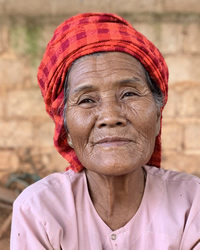Burmese in Australia

Photo Source:
Anonymous
|
Send Joshua Project a map of this people group.
|
| People Name: | Burmese |
| Country: | Australia |
| 10/40 Window: | No |
| Population: | 18,000 |
| World Population: | 30,754,900 |
| Primary Language: | Burmese |
| Primary Religion: | Buddhism |
| Christian Adherents: | 0.35 % |
| Evangelicals: | 0.07 % |
| Scripture: | Complete Bible |
| Ministry Resources: | Yes |
| Jesus Film: | Yes |
| Audio Recordings: | Yes |
| People Cluster: | Burmese |
| Affinity Bloc: | Tibetan-Himalayan Peoples |
| Progress Level: |
|
Introduction / History
The Burmese originated in the hills of Tibet, and they speak a Sino-Tibetan language called Bama (Burmese). Today, they are the political, economic and religious leaders of Myanmar, formerly known as Burma.
Myanmar has had a long history of coups, wars, and rebellions. Ethnic divisions and political unrest have been common since the first Burman Kingdom in the eleventh century. Today, the Burmese military maintains forcible control over the ethnic groups who want equal rights in the government and in commerce. The military promises cease-fires; but at the slightest note of rebellion, they attack. Consequently, the Burmese have lived in a constant state of instability, defense, bitterness, and fear. Thousands flee the country to peaceful countries like Australia.
There is also a small population of Burmese who have been in Australia for generations. These people usually served with the Australian military or were family members of military personnel. They are much more assimilated, though they have kept their Buddhist religion.
Where Are they Located?
Most Burmese live in their home country, Myanmar. A large number have fled to refugee camps in nearby Thailand. From there, the fortunate ones are able to find asylum in other countries like Australia. The Burmese in Australia often live in major cities like Melbourne and Sydney, but some are being re-settled in the less densely populated parts of Australia's southeast.
Not all people who flee Myanmar are Burmese. There are a large number of ethnic minorities like the Chins and Karens, both of which have a large Christian population. More recently the predominantly Muslim Rohingyas have been fleeing Myanmar.
What Are Their Lives Like?
Even Burmese people with a good education and marketable skills in Myanmar are at a grave disadvantage when trying to get high-paying jobs in English-speaking Australia. Some have managed to start food businesses. Others are under-employed.
What Are Their Beliefs?
The Burmese are predominantly Buddhists. The traditional goal in Buddhism is to seek the middle path to nirvana, or ultimate peace. The Burmese have mixed these Buddhist beliefs with their own animistic beliefs (belief that non-living objects have spirits).
Their animistic beliefs center around inherently evil spirits called nats. The Burmese spend their lives trying to appease the nats so that they will be protected from any other evil spirits that may seek to harm them. Burmese homes often have altars for the spirits, as well as a statue of Buddha.
The Burmese, like other Buddhists, believe that death is not a threat to one who has done good deeds. Instead, death is simply a "passing" from one life to another. They believe that "rebirth" is determined by the accumulated good or bad deeds done in the previous live. Therefore, those who have earned less merit are reborn as demons, ghosts, animals, or inhabitants of hell.
What Are Their Needs?
The recent refugees need help in getting assimilated into Australian society. They need to be taught English and job skills. They need help from believers who will help them get a place to live, a job, and learn the basics of how to operate in an unfamiliar country.
Prayer Points
Pray that the troubles in Burma will lead the Burmese to come to salvation.
Pray for the effectiveness of the JESUS Film among the Burmese in Australia.
Ask the Holy Spirit to soften the hearts of the Burmese towards believers so that they will be receptive to the gospel.
Pray that believers will show Burmese refugees love and lead them to Jesus Christ.
Pray for Australia to become the starting point for a Disciple-Making movement among Burmese Buddhists.